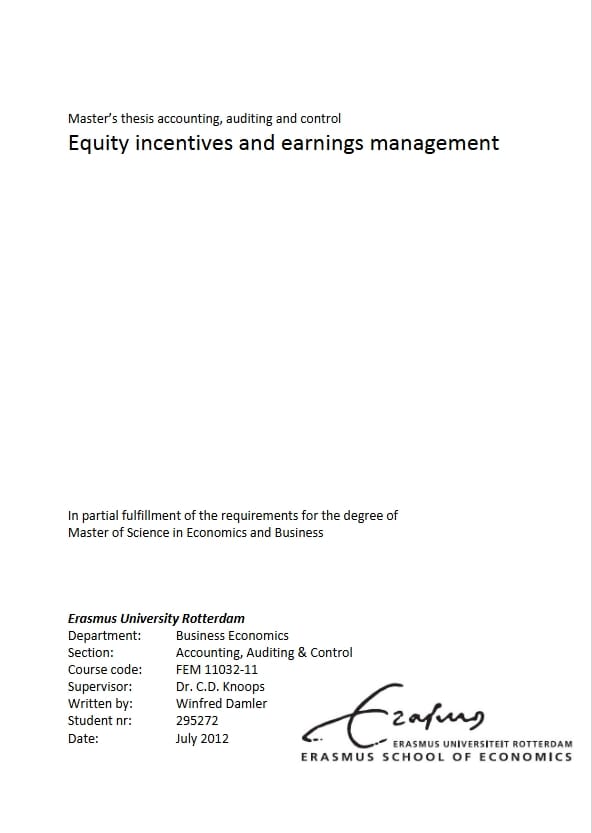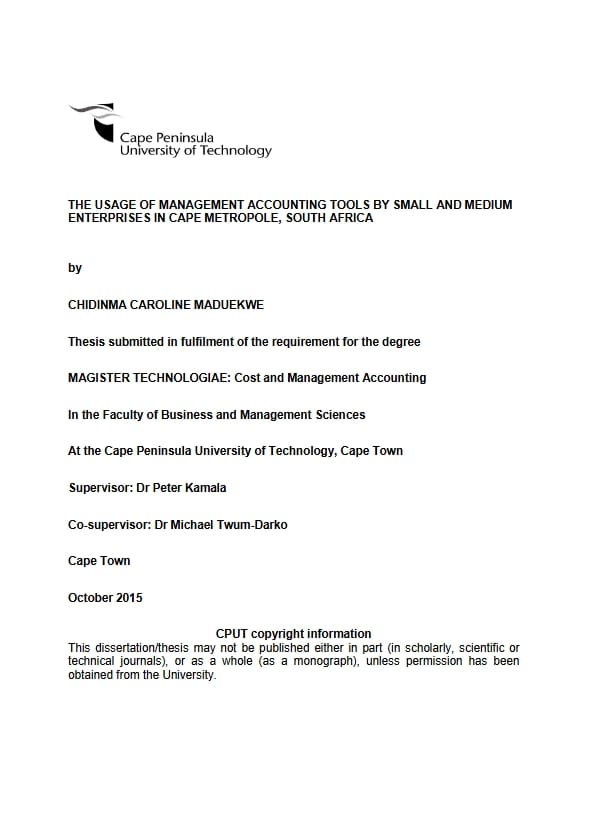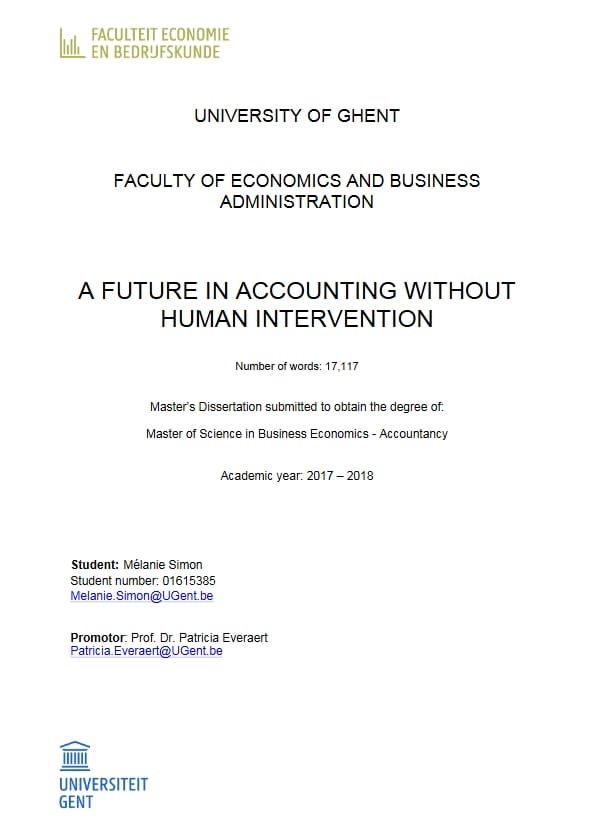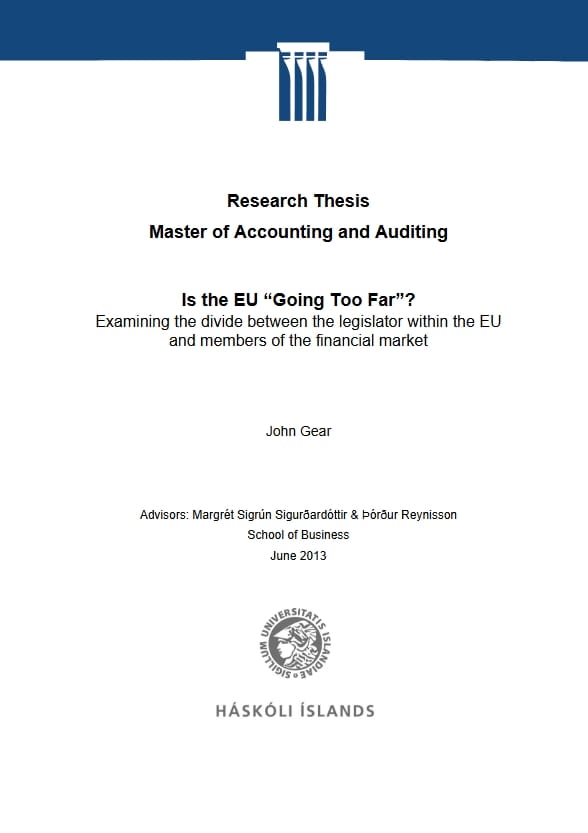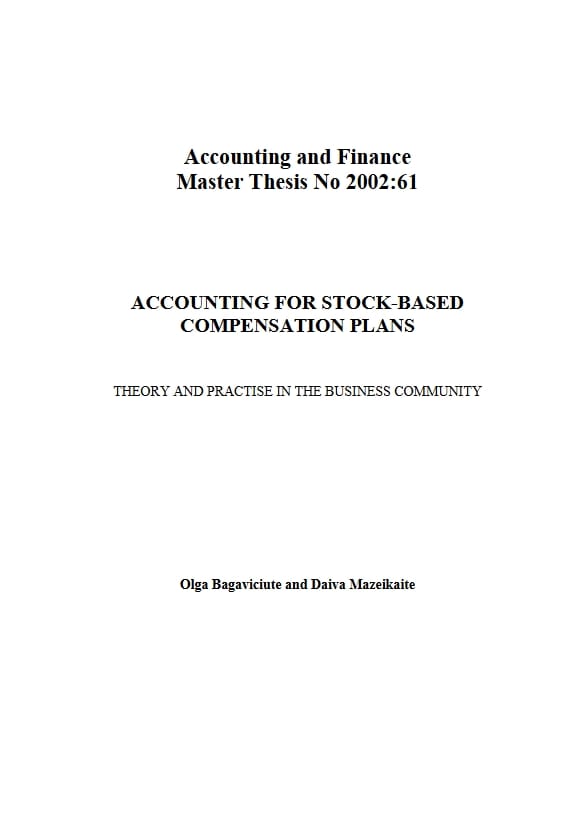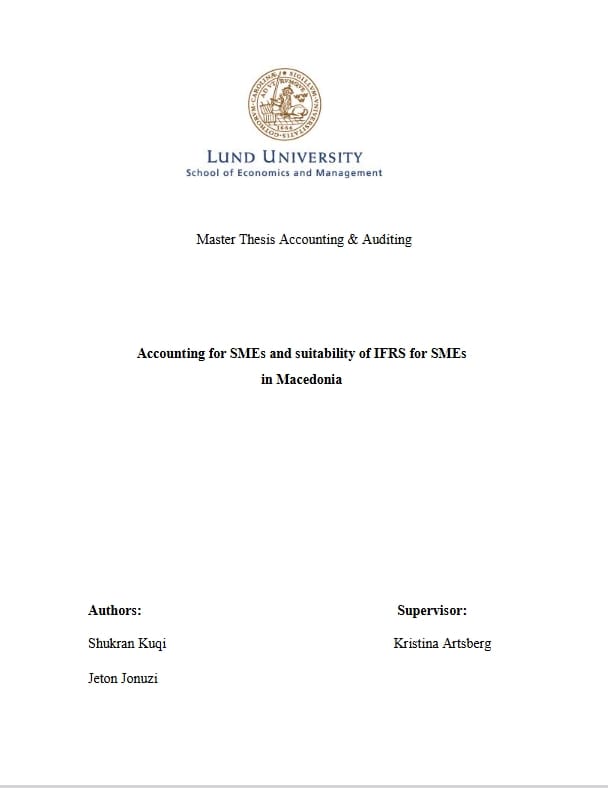Table of Contents
ABSTRACT ………………………………………………………………………………………………………………… 2
ABBREVIATIONS ……………………………………………………………………………………………………….. 2
CHAPTER 1: INTRODUCTION ………………………………………………………………………….. 5
1.1 Introduction …………………………………………………………………………………………………………………. 5
1.2 Purpose of the Thesis and Research Question ………………………………………………………………….. 8
1.3 Relevance and Contribution …………………………………………………………………………………………… 9
1.4 Structure of the Thesis ………………………………………………………………………………………………… 10
CHAPTER 2: EARNINGS MANAGEMENT – THE THEORY ……………………………….. 11
2.1 Introduction and the Reason for Earnings Management …………………………………………………. 11
2.2 What Do We Consider Earnings Management? ………………………………………………………………. 13
2.3 Measuring Earnings Management with Accruals ……………………………………………………………. 17
2.4 Who Commits Earnings Management? …………………………………………………………………………. 18
2.5 Summary Definition of Earnings Management ………………………………………………………………. 18
CHAPTER 3: ACCRUAL MODELS …………………………………………………………………….. 20
3.1 Accruals …………………………………………………………………………………………………………………….. 20
3.2 The Healy Model (1985) ………………………………………………………………………………………………. 22
3.3 The DeAngelo Model (1986) …………………………………………………………………………………………. 23
3.4 Jones Model (1991) …………………………………………………………………………………………………….. 23
3.5 Modified Jones Model (1995) ……………………………………………………………………………………….. 26
3.6 Time-Series vs. Cross-Sectional Jones Models ………………………………………………………………. 27
3.6.1 Time-Series Designs with the Jones Model …………………………………………………………… 28
3.6.2 Cross-Sectional Designs with the Jones Model …………………………………………………….. 29
3.7 Difference Between Balance Sheet Accruals and Cash Flow Accruals ……………………………… 30
3.8 Improved Versions of the Jones Model ………………………………………………………………………….. 32
3.9 The Forward-Looking Model (2003) ……………………………………………………………………………… 32
3.10 Cash Flow Jones Model (2002) ……………………………………………………………………………………. 34
3.11 Larcker and Richardson (2004) …………………………………………………………………………………… 37
3.12 Performance Matching Model (2005) …………………………………………………………………………… 38
3.13 The Business Model (2007) ………………………………………………………………………………………… 41
3.14 Recent Literature on Accrual Models …………………………………………………………………………… 44
3.15 Chapter Summary ……………………………………………………………………………………………………… 45
CHAPTER 4: ESTIMATING THE EQUITY INCENTIVES ……………………………………… 47
4.1 Boundaries of Bonus Schemes ………………………………………………………………………………………. 47
4.2 Maximizing Earnings in Japan ………………………………………………………………………………………. 47
4.3 Proxy for Equity Incentives …………………………………………………………………………………………… 48
4.4 Summary …………………………………………………………………………………………………………………….. 49
CHAPTER 5: EMPIRICAL RESEARCH ON EARNINGS MANAGEMENT DUE TO EQUITY INCENTIVES …………………………………………………………………………………………. 50
5.1 Introduction …………………………………………………………………………………………………………………. 50
5.2 Remuneration ……………………………………………………………………………………………………………… 50
5.3 Equity Incentives ………………………………………………………………………………………………………….. 54
5.4 CEO and CFO Equity Incentives …………………………………………………………………………………….. 59
5.5 Summary …………………………………………………………………………………………………………………….. 64
CHAPTER 6: HYPOTHESES ……………………………………………………………………………… 66
6.1 Hypothesis 1 ……………………………………………………………………………………………………………….. 66
6.2 Hypothesis 2 ……………………………………………………………………………………………………………….. 66
6.3 Hypothesis 3 ……………………………………………………………………………………………………………….. 66
6.4 Hypothesis 4 ……………………………………………………………………………………………………………….. 67
CHAPTER 7: RESEARCH DESIGN AND METHODOLOGY ………………………………….. 69
7.1 Introduction …………………………………………………………………………………………………………………. 69
7.2 Accrual Model ……………………………………………………………………………………………………………… 69
7.3 Measure for Equity Incentives ……………………………………………………………………………………….. 71
7.4 Estimating the Relationship Between Earnings Management and Equity Incentives …………. 73
7.5 Sample ………………………………………………………………………………………………………………………… 73
7.6 Descriptive Statistics ……………………………………………………………………………………………………. 74
CHAPTER 8: FINDINGS …………………………………………………………………………………….. 79
8.1 Introduction …………………………………………………………………………………………………………………. 79
8.2 Hypothesis 1 ……………………………………………………………………………………………………………….. 82
8.3 Hypothesis 2 ……………………………………………………………………………………………………………….. 83
8.4 Hypothesis 3 ……………………………………………………………………………………………………………….. 85
8.5 Hypothesis 4 ……………………………………………………………………………………………………………….. 86
8.6 Summary …………………………………………………………………………………………………………………….. 88
CHAPTER 9: LIMITATIONS ………………………………………………………………………………. 90
CHAPTER 10: CONCLUSION …………………………………………………………………………… 93
Summary and Main Conclusions ………………………………………………………………………………………. 93
Recommendations …………………………………………………………………………………………………………… 93
BIBLIOGRAPHY ……………………………………………………………………………………………….. 95
APPENDICES
Appendix 1 ………………………………………………………………………………………………………………………. 97
Appendix 2 ………………………………………………………………………………………………………………………. 99
Appendix 3 …………………………………………………………………………………………………………………….. 100
Appendix 4 …………………………………………………………………………………………………………………….. 101

